Unlike other settlers in South Australia, the first Lutherans were mostly non-English-speaking religious refugees. Five to six hundred, mainly from rural villages in the province of Brandenburg near Silesia, arrived at the end of 1838 and the beginning of 1839. Led by Pastor August Kavel, they sought freedom to worship according to their Lutheran beliefs, which was denied them by the state-controlled Prussian Evangelical Church.
They found a handful of Lutherans already here (including two missionaries to Aborigines), but otherwise were in a strange land surrounded by Christians in the English Protestant tradition. Moreover, Kavel and his people were pietists, valuing an intensely felt faith demonstrated in shunning worldly pleasures (for example, dancing), so they tended to keep to themselves in their own rural communities. They first settled at Klemzig near Adelaide and then in the Adelaide Hills, and from 1843, after more Prussians had migrated, in the Barossa Valley. Although sometimes patronised for their quaint foreign ways, the German Lutherans were generally respected by their fellow citizens as solid, hard working and serious – traits perhaps still discernible today.
Divisions in the church
The first Lutherans tended to be uncompromising in their faith. In 1846 doctrinal differences split the Lutheran Church in South Australia, one group following Pastor Kavel and the other Pastor Gotthard Daniel Fritzsche. Although attempts were made to unite for mission work, this rift was not permanently healed until 1966, with the formation of the present Lutheran Church of Australia. When other Lutherans arrived later from different regions, these varied influences led to further disagreements and divisions.
Lutherans also settled elsewhere in Australia, but the Lutheran Church has remained strongest in South Australia. While initial dependence on pastors imported mainly from Germany reinforced the use of the German language and continued cultural isolation, Lutherans generally saw themselves as truly Australian. The first Lutherans were grateful for their new-found religious freedom and on 24 May 1839, in one of their first acts as a community, swore allegiance to Queen Victoria.
Twentieth century
By the early 1900s some pastors were being brought from the United States, and training had begun in Australia. The two world wars accelerated the use of English because suddenly many Lutherans, including even third-generation Australians who had no connections with Germany, were ostracised or persecuted for being German. This experience reinforced their social and political conformity and non-involvement in public life. More Lutherans arrived after World War II from Germany and the Baltic countries.
Present day discussions
Only in the last few decades has real dialogue and cooperation with other churches begun, although the initial concern to keep pure the Lutheran teachings remains. In spite of greater tolerance, tensions continue between a religious conservatism bordering on fundamentalism and a broader Lutheran tradition, and between a liturgical and a more informal worship style. Ethics are now more likely to be seen in social as well as personal terms. While increasing numbers of Lutherans live in urban areas and many have a tertiary education, some initial emphases have continued: clearly taught beliefs based on the centrality of God’s reconciling love through Jesus Christ as expounded in the Bible, mission outreach, Christian education, and the distribution of Christian literature.
The 1996 Australian census reported the number of Lutherans in South Australia as 71,397, approximately five per cent of the population.


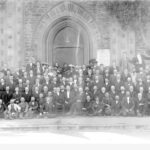

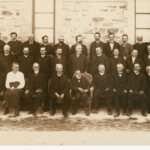
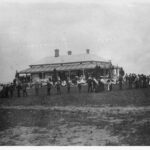
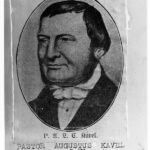
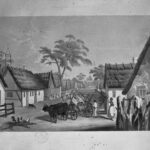
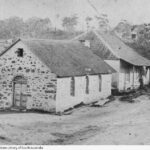

Comments
4 responses to “Lutheran Church”
I am trying to find information about my great-grandfather who migrated to Adelaide from Hamburg (Altona) Germany in the early 1840’s. We have details of his naturalization in 1846 and also of his land purchase in Rundle Street from William Rowe Latter in July 1852.
Hi Lorraine, if he was a Lutheran I’d suggest a visit to the Lutheran Archives – http://community.history.sa.gov.au/lutheran-archives
I am intrigued by the comments of older generations Lutherans about the total ban on dancing making it a taboo topic
What was the thinking behind this ban on dancing?
Was it based on scripture?
How were Christians convinced that it was non-christian behaviour
I am interested as I am following up oral histories of Lutherans and this topic comes up with such emotion…. regards Carolyn
Hi Carolyn,
I’m afraid I’m not sure about the origins of the dancing ban, other than to say that Methodists also did not participate in ‘worldly habits’ including dancing. My best suggestion is to try the Lutheran Archives, and see if they have more information – https://www.lca.org.au/departments/ministry-support/lutheran-archives/